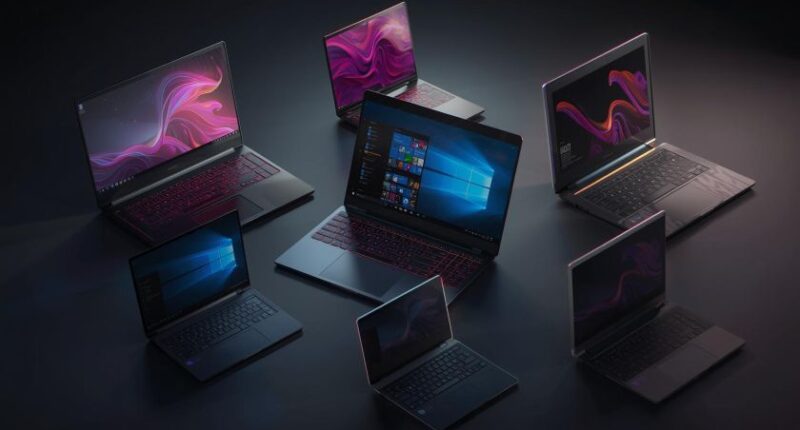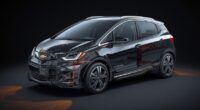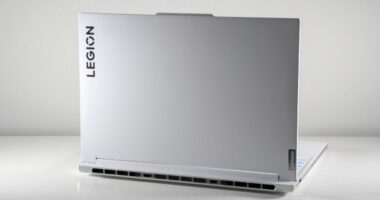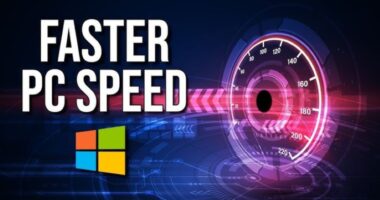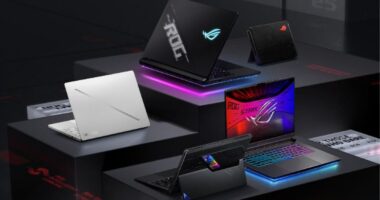If you build with AI — generating art, running on-device models, editing AI-assisted video, or doing ML prototyping — 2025 brings laptops purpose-built for those workloads. The best machines combine strong NPUs/GPUs, multi-core CPUs, plenty of RAM, fast NVMe storage, and solid thermals so your local inference, creative apps, and fine-tuning sessions run smoothly. Below are the Top 7 laptops for AI creators in 2025, with who each one is best for and what to watch out for. Newsroom+2Tom’s Guide+2
How we picked these laptops (quick buying checklist)
Essential specs for AI creators
-
AI acceleration: dedicated GPU (NVIDIA RTX 40/50 series) or modern NPUs (Intel/AMD/Qualcomm) for on-device models.
-
Memory: 32 GB is the sweet spot; 16 GB can work for light inference.
-
Storage: NVMe PCIe Gen-4 / Gen-5 SSD (1 TB preferred).
-
Thermals & sustained performance: vapor chamber or robust dual-fan design so the laptop won’t throttle under long runs.
-
Display: high-quality OLED/mini-LED with wide color gamut for creatives.
-
Ports & expandability: Thunderbolt/USB-C, HDMI 2.1 and at least one upgradeable SSD slot. Lenovo+1
1. ASUS ROG Flow Z13 — Best ultraportable for AI creators who travel
Why it’s here: The Flow Z13 balances portability with surprising AI chops: powerful SoC options and strong NPU support let creators run larger on-device models without hauling a heavy desktop replacement. It’s ideal if you need a tablet form factor for sketching and quick model testing. Tom’s Guide picked it as a top overall AI pick in 2025. Tom’s Guide
Pros: Lightweight, detachable option, good thermal tuning for its size.
Cons: Small screen for heavy timelines; upgradeability limited.
2. ASUS ROG Strix Scar 18 — Powerhouse for model development & heavy inference
Why it’s here: For creators who train small models, render AI-assisted video, or do GPU-heavy workflows, the Strix Scar 18 delivers desktop-class GPUs and top-tier cooling. If you prioritize raw compute over portability, this is a standout. Tom’s Hardware
Pros: Massive GPU headroom, excellent thermals, large display.
Cons: Heavy and short battery life under load.
3. Apple MacBook Pro (M4 Pro/Max) — Best for creative AI apps on macOS
Why it’s here: Apple’s silicon continues to lead in efficient neural engines and creative app optimization. If your pipeline uses native macOS apps (Final Cut, Logic, Apple ML frameworks) or you value battery life + silent operation, the M4 Pro/Max options remain compelling for many creators. Reviews show strong AI inference per watt vs many x86 designs. Windows Central
Pros: Excellent battery life, tight hardware-software optimization, quiet.
Cons: Limited for CUDA-dependent workflows; hardware upgrade path constrained.
4. Lenovo ThinkPad/Legion/IdeaPad AI-capable models — Best business + dev hybrid
Why it’s here: Lenovo’s recent guides and workstation lineups show options that scale from mobility to heavy compute (ThinkPad T/Legion/IdeaPad Pro variants). Some models now feature Intel/AMD chips with powerful NPUs and options for discrete RTX GPUs — a good compromise for devs who need reliability and serviceability. Lenovo+1
Pros: Great keyboards, expandability, enterprise reliability.
Cons: Some models trade display quality for price.
5. Razer Blade 16 (or Razer Blade 18) — Best designer-grade performance + aesthetic
Why it’s here: Razer’s Blades marry premium displays and build with powerful NVIDIA GPUs, making them excellent for creators who want both photoreal renders and accurate color. These are popular among creators who test models locally and do heavy content creation. Tom’s Hardware
Pros: Premium build, color-accurate displays, strong GPU options.
Cons: Pricey; thermal noise under load.
6. Microsoft Surface Laptop / Surface Laptop Studio (Snapdragon/Intel AI variants) — Best for daily creators who want battery life
Why it’s here: ARM-based Snapdragon and new Intel hybrid models emphasize NPU efficiency and long battery life while offering enough on-device AI power for creative tools and real-time assistance. If you do lots of mobile editing, prompt engineering, and light inference, these are sleek, long-lasting choices. SentiSight.ai+1
Pros: Exceptional battery life, thin/light.
Cons: Not for heavy GPU training; some Windows apps still less optimized on ARM.
7. Mobile Workstation (HP ZBook / Lenovo P / Dell Precision) — Best for pro-level ML/AI & enterprise creators
Why it’s here: When you need ECC storage options, professional GPU drivers, and maximum reliability, mobile workstations still win. They offer pro-grade GPUs (and increasingly high VRAM consumer GPUs), larger thermal envelopes, and expandability for serious creators and engineers. PCWorld
Pros: Expandable, certified drivers for pro apps, robust chassis.
Cons: Bulkier and more expensive.
Final thoughts — choosing for your workflow
-
If you run local large models occasionally: favor laptops with strong NPUs or RTX 40/50-series GPUs (Flow Z13, Strix Scar).
-
If you’re a creative who values color fidelity and battery life: consider MacBook Pro M4 options or premium ultrabooks.
-
If you train or fine-tune often: a desktop or workstation class laptop with an RTX 50-series GPU or a mobile workstation will give the best ROI.
-
Budget & portability tradeoffs: ultraportables sacrifice raw GPU headroom for battery and weight; gaming laptops give more performance at the cost of size.
Want a comparison table or buy-guide for your blog?
I can generate a downloadable comparison table (specs: CPU/NPU, GPU, RAM, SSD, display, weight, battery, price) tailored to your audience (creators, hobbyists, enterprise). Which format do you prefer — Markdown table, CSV, or a ready-to-paste WordPress HTML block?
